2023 Program
Filter by Area
Dates to Remember
Abstract Submission Begins:
16 September 2025
Abstract Deadline:
13 November 2025, 8 p.m. ET, USA
Author Notification:
9 February 2026
Manuscript Deadline:
5 May 2026, 8 p.m. ET, USA
*Dates are subject to change.
Review the 2023 program below.
All times are listed in Pacific Time (PDT)
-
Student Welcome Mixer
Description
Location South Poolside (Marriott Marquis) *Please note this event is being held at a different location than forum hotel. Mingle with your peers and hear from AIAA leadership. This is a student-only event.
- Opening Keynote – Revolutionary Leaps Toward a New Age of Aviation
-
Networking Break
-
Live Technical Sessions
-
Forum 360: Revolutionary Leaps Toward a New Age of Aviation, Part 1
Description
- The aviation industry has had some very important successes over the past year, and some exciting changes coming to the industry. Our executives will cover these subjects, and provide their view of the impact of advancing technology, as we assess the current and future state of the industry!
- Lead in presentation: White House Aviation Policy Initiative “A Vision for America’s Continued Global Leadership in Aeronautics”
Presenter
-
 Ezinne Uzo-Okoro
Assistant Director for Space Policy
Ezinne Uzo-Okoro
Assistant Director for Space Policy
Moderator
-
 Graham Warwick
Executive Editor, Technology
Graham Warwick
Executive Editor, Technology
Panelists
-
 Todd Citron
Chief Technology Officer
Todd Citron
Chief Technology Officer -
 Johnny Hodges
Vice President, Engineering
Johnny Hodges
Vice President, Engineering -
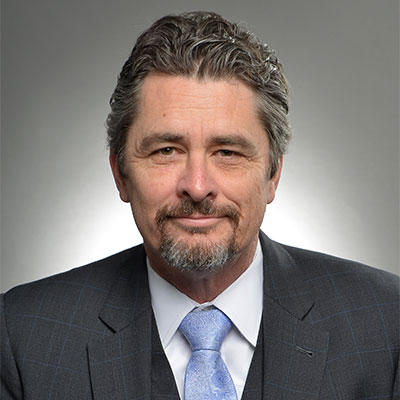 Tom Jones
Corporate Vice President and President
Tom Jones
Corporate Vice President and President -
 Renee Pasman
Vice President of Integrated Systems for Advanced Development Programs (ADP)
Renee Pasman
Vice President of Integrated Systems for Advanced Development Programs (ADP) -
 Francis R. Preli, Jr.
Vice President, Propulsion and Materials Technologies
Francis R. Preli, Jr.
Vice President, Propulsion and Materials Technologies
-
Networking Lunch
-
Live Technical Sessions
-
FlightLab: Readiness of SAF, electric and hydrogen infrastructure
Description
When talking about sustainable aviation, we tend to focus on the development of the technology and say that the infrastructure development is challenging because it is an "egg and chicken" scenario. Yet, we need to have some level of infrastructure ready to support the aircraft when they enter the market. Therefore, we must understand the level of infrastructure needed when the aircraft enter the market and also further down the road. This debate will look at the level of infrastructure required to support sustainable aviation in the near term and how to futureproof it. When talking about looking at the infrastructure required, we can leverage the learnings we have had with other industries. While from an engineering perspective, all three infrastructures can be delivered, we must understand how they can become economically feasible and make sense in terms of energy intensity/requirements.Panelists
-
 Arturo Alonso-Garcia
Avports
Arturo Alonso-Garcia
Avports -
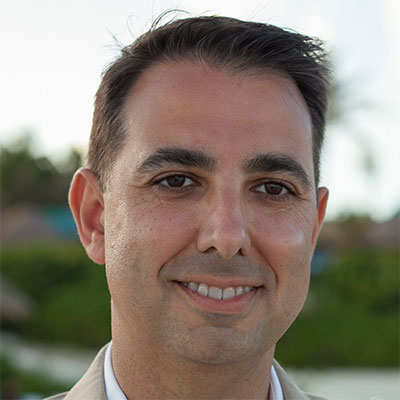 Ruben G. Creus
Chief Executive Officer
Ruben G. Creus
Chief Executive Officer -
 Brett Oakleaf
NREL
Brett Oakleaf
NREL
-
-
Forum 360: Revolutionary Leaps Toward a New Age of Aviation, Part 2
Description
New technologies, customer demand for saving time, and the need to decarbonize aviation are about to bring a sea of change to the aerospace industry, leaving the current tube-and-wing designs behind for a new generation of aircraft that will be radically different. Meet the leaders of the cutting-edge companies working on these new technologies and listen to their views and visions for the aircraft of the future.
Moderator
-
 Sergio Cecutta
Partner
Sergio Cecutta
Partner
Panelists
-
 Sean Black
Senior Vice President - Chief Technology Officer & Chief Engineer
Sean Black
Senior Vice President - Chief Technology Officer & Chief Engineer -
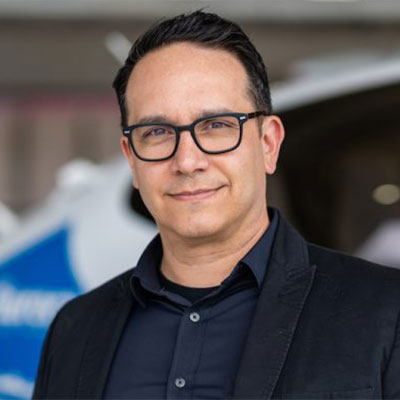 Mike Caimona
President and CEO
Mike Caimona
President and CEO -
 Manal Habib
CEO
Manal Habib
CEO -
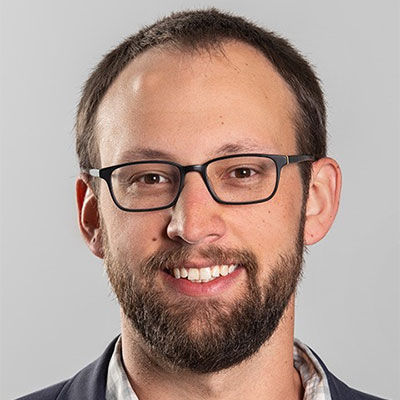 Ben Murphy
VP, Sustainability
Ben Murphy
VP, Sustainability -
 Ian Villa
COO & Chief Product Officer
Ian Villa
COO & Chief Product Officer
-
-
Journal Peer Reviewer 101
Description
AIAA's journals are the best resource for staying current on the latest aerospace research and development. Reporting on the most important aerospace advances, AIAA‘s eight active technical journals feature original research papers spanning the spectrum of aerospace science and technology. Learn about the peer review process for AIAA journals from Editors-in-Chief and Associate Editors of several AIAA journals. Help evaluate the technical content, importance to the field, style and clarity, and completeness of manuscripts. RSVP required. RSVP Now -
Networking Break
-
Forum 360: NASA’s Year of Aviation
Description
The NASA Aeronautics research portfolio is exploring and delivering on a number of impactful transformational innovations, and has begun several new systems technology demonstration initiatives with the promise of long-term value to aviation community. You will hear NASA executive leadership speak to its compelling research and development portfolio, and will also hear from technical leaders who are pushing the boundaries with some of NASA’s newest activities and future workforce investments.- Lead in presentation: NASA's Year of Aviation
Presenters
-
 John A. Cavolowsky
Director, Transformative Aeronautics Concepts Program, NASA Aeronautics Research Mission Directorate (ARMD)
John A. Cavolowsky
Director, Transformative Aeronautics Concepts Program, NASA Aeronautics Research Mission Directorate (ARMD) -
 Robert Pearce
Associate Administrator, Aeronautics Research Mission Directorate
Robert Pearce
Associate Administrator, Aeronautics Research Mission Directorate
Moderator
-
 Barbara Esker
Assistant Deputy Associate Administrator for Missions
Barbara Esker
Assistant Deputy Associate Administrator for Missions
Panelists
-
 Gelsomina Cappuccio
Deputy Manager for University Innovation Project
Gelsomina Cappuccio
Deputy Manager for University Innovation Project -
 Brent Cobleigh
Project Manager, Sustainable Flight Demonstrator Project
Brent Cobleigh
Project Manager, Sustainable Flight Demonstrator Project -
 Marcus Johnson
Research Aerospace Engineer
Marcus Johnson
Research Aerospace Engineer
-
FlightLab: Zero Emission Aviation – A Status Report on Global Efforts
Description
This is a topic where multiple research teams, almost in partnership with OEM's, are working at present around the globe. Several programs have been funded under EU Horizons program, Recently, NASA ARMD invited new ideas on "Zero Emission Aviation" under its University Leadership Initiative. Two teams were funded, and new one(s) may be funded by the time of this conference. Under Trailblazers program, Australian government has also funded efforts on decarbonization of aviation. This proposed session is intended to invite researchers from all these teams from across the globe together under a common forum, so that latest advances can be shared and challenges discussed.Panelists
-
 Phillip J. Ansell
Assistant Professor and Allen Ormsbee Faculty Fellow, Department of Aerospace Engineering
Phillip J. Ansell
Assistant Professor and Allen Ormsbee Faculty Fellow, Department of Aerospace Engineering -
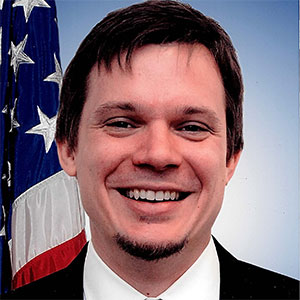 James Hileman
VP and Chief Engineer for Sustainability & Future Mobility
James Hileman
VP and Chief Engineer for Sustainability & Future Mobility -
 Jay Kapat
University of Central Florida
Jay Kapat
University of Central Florida -
 Rory Roberts
Tennessee Tech University
Rory Roberts
Tennessee Tech University -
 Shashank Sripad
And Battery Aero
Shashank Sripad
And Battery Aero -
 Roelof Vos
Delft Institute of Technology
Roelof Vos
Delft Institute of Technology
-
-
Meet the Employers
Description
12 June 2023 1530 – 1730 | Grand Hall D, Manchester Grand Hyatt, San Diego, California Students and young professionals—you are invited to network with AIAA Corporate members during Meet the Employers at the 2023 AIAA AVIATION Forum in San Diego, California. This is a can’t-miss occasion where you can meet with AIAA Corporate Member -
AIAA Wright Brothers Lecture in Aeronautics Award
Description
AIAA Wright Brothers Lecture in Aeronautics: Larry A. Young, 12 June 2023
-
Opening Keynote – Airships: A Sustainable Path to Decarbonizing Transportation and Complementing Humanitarian Aid
Description
Twenty-first-century next-generation airships will create a new, clean highway in the sky with zero-carbon transportation for cargo and passengers to support humanitarian assistance and a multitude of other applications. Currently, modern transportation is carbon-intensive, including aviation, which emits nearly 1 billion metric tons of CO2 annually. LTA is forging a new path to zero-carbon air transportation that helps shape a cleaner world and complements other green aviation, land, and maritime initiatives.Introductory Remarks
-
 Edward Gerding
Boeing
Edward Gerding
Boeing
Keynote
-
 Alan Weston
CEO
Alan Weston
CEO
-
-
Networking Break
-
FlightLab: Comeback of Riblet Surfaces in Aviation – Hype or Hope?
Description
Riblets are well know in Aviation as there have been many research in the last century (see AIAA Papers). However there was never a real usage or business case. In recent years more and more research was done (see AIAA Scitech Papers) with different players. Now also Industry is jumping in and investing many recourses in that topic. However, it seems there are many question marks behind the economical benefit of Riblets. The discussion should be about if it is just another Hype or if Riblets "stay" in Aviation this time.Moderator
Panelists
-
 Aaron Altman
Aerodynamic Technologies Branch Technical Advisor
Aaron Altman
Aerodynamic Technologies Branch Technical Advisor -
 David Gonzalez
Aerodynamics and Flight Dynamics, Control Program Officer, Aerospace Sciences Division
David Gonzalez
Aerodynamics and Flight Dynamics, Control Program Officer, Aerospace Sciences Division -
 Timothy J. Hebrink
Senior Staff Scientist
Timothy J. Hebrink
Senior Staff Scientist -
 Jonathan W. Naughton
Professor of Mechanical Engineering University of Wyoming, Director, UW Wind Energy Research Center (WERC)
Jonathan W. Naughton
Professor of Mechanical Engineering University of Wyoming, Director, UW Wind Energy Research Center (WERC) -
 Brian Smith
Lockheed Martin Senior Fellow
Brian Smith
Lockheed Martin Senior Fellow
-
-
Spotlight Session on Electrified Aircraft Technology: Hybrid Electric and Hydrogen Innovations at DLR
Description
Sponsored by: Aircraft Design, Transformational Flight and Propulsion & Energy Technical Committees
Session Chairs
-
 Roelof Vos
Delft Institute of Technology
Roelof Vos
Delft Institute of Technology -
 Jason Merrett
Associate Professor
Jason Merrett
Associate Professor
Speaker
-
 Björn Nagel
Founding Director, German Aerospace Center (DLR)
Björn Nagel
Founding Director, German Aerospace Center (DLR)
-
-
Live Technical Sessions
-
Forum 360: Navigating the Future of Aviation Sustainability: Decarbonizing the Skies
Description
The aviation industry plays a significant role in the global economy, connecting people and businesses around the world. However, aviation is responsible for a growing percentage of greenhouse gas emissions, contributing to climate change. To address this challenge and meet the net-zero 2050 goals, the industry is focusing on decarbonization efforts now, including alternative fuels, electric and hybrid-electric aircraft, and other innovative technologies.Moderator
-
 Cat Hofacker
Associate Editor
Cat Hofacker
Associate Editor
Panelists
-
 Andreas Kollbye Aks
Chief Strategy Officer
Andreas Kollbye Aks
Chief Strategy Officer -
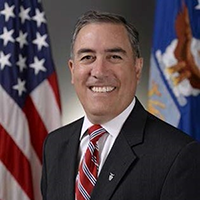 Roberto Guerrero
Deputy Assistant Secretary of the Air Force for Operational Energy
Roberto Guerrero
Deputy Assistant Secretary of the Air Force for Operational Energy -
 James Hileman
VP and Chief Engineer for Sustainability & Future Mobility
James Hileman
VP and Chief Engineer for Sustainability & Future Mobility -
 John Katsoudas
Founder & Chief Executive Officer
John Katsoudas
Founder & Chief Executive Officer -
 Kolin Schunck
Senior Manager, Strategic Innovation and Intelligence
Kolin Schunck
Senior Manager, Strategic Innovation and Intelligence -
 Bruno SIlva
Environment Officer, Long-Term Aspirational Goal for International Aviation (LTAG), Sustainable Aviation Fuels (SAF)
Bruno SIlva
Environment Officer, Long-Term Aspirational Goal for International Aviation (LTAG), Sustainable Aviation Fuels (SAF)
-
-
FlightLab: Aerial Suppression Of Wildfires: Present and Future Technologies and Their Implications for The Climate Crisis
Description
Presenters will discuss all aspects of aerial suppression of wildfires, including old and new aircraft types, optimized designs, effectiveness, challenges, concepts of operation, coordinated air traffic command and control, use of drones and electrically-powered aircraft, costs, benefits, detection systems, integration with existing systems, fuel concerns, environmental impacts, maintenance, piloting, robotic vehicles and needs of air attack bases.Session Chair
-
 Brien Seeley
President
Brien Seeley
President
Panelists
-
 Marcus Johnson
Research Aerospace Engineer
Marcus Johnson
Research Aerospace Engineer -
 Jasenka Rakas
Founder of the Airport Design Studio and Aviation Futures Lab, and Faculty in the Civil and Environmental Engineering Department
Jasenka Rakas
Founder of the Airport Design Studio and Aviation Futures Lab, and Faculty in the Civil and Environmental Engineering Department
-
-
Lunch on Own
- IPLC: Looking Back to the Future: V/STOL Evolution and Its Current Revolution
-
Live Technical Sessions
-
Exhibit Hall
-
SUAS/ALE Aerial Recovery
Description
SUAS/ALEs have become valuable military assets but have limitations on their endurance and range. Further, most currently are recovered via belly or skid landing, which is not possible for operations over blue water. Even when recovering on land, the ALE’s airframes and payloads are jeopardized. To remain affordable, they must utilize inexpensive sensors with limited performance. ALE Aerial Recovery will be a game changer: ALEs can be recovered over blue water and no longer will airframes and payloads be jeopardized. ALEs will be able to carry high performance sensors that will dramatically improve the ALE’s effectiveness. This presentation will show GA-ASI’s concept for SUAS/ALE aerial recovery, the mission cost benefit of SUAS/ALE aerial recovery, and our technical roadmap.Sponsored by:

Speakers
-
 Mike Allwein
Technical Director
Mike Allwein
Technical Director
-
-
Forum 360: Sustainable Aviation Fuel & Certification
Description
Sustainable aviation fuel (SAF) is the most promising near- and mid-term solution to reducing carbon emissions and putting aviation on a path toward achieving net-zero emissions by 2050. SAF can be made with a variety of technologies that use physical, biological, and chemical reactions to break down biomass and waste resources and recombine them into energy-dense hydrocarbons. This session will explore these various technologies.Introductory Presentation
-
 Anna Oldani
Energy Program Manager
Anna Oldani
Energy Program Manager
Moderator
-
 Curt Epstein
Senior Editor
Curt Epstein
Senior Editor
Panelists
-
 Jim Andersen
Head of Business Development
Jim Andersen
Head of Business Development -
 Gary Grimes
Director, Business Development Sustainability
Gary Grimes
Director, Business Development Sustainability -
 Anna Oldani
Energy Program Manager
Anna Oldani
Energy Program Manager -
 Staff Sheehan
Founder, Stealth Startup
Staff Sheehan
Founder, Stealth Startup
-
-
FlightLab: Toward Routine Operations of More Aircraft (m) Than Remote Pilots
Description
The AAM ecosystem is expected to advance from current state-of-the-art operations to a ubiquitous capability, similar to cars today. To realize this vision for AAM, technology will be needed to allow a few operators to manage many vehicles. This is accomplished by fully-automated or autonomous aircraft that have no need for a pilot or operator on-board or on the ground, improving vehicle productivity and economics. The likely scenario is that a remote supervisor will oversee the operation of multiple aircraft with strategic fleet management goals. There are numerous challenges associated with technical/operational, safety and security, societal acceptance, and regulatory. The path from existing m:n operations on small UAS in isolated areas to larger aircraft, such as air taxis and cargo aircraft, operating in a more integrated NAS is not clear. The panel will discuss key gaps in aviation and research community activities that need to be addressed and/or accelerated to enable routine m:n operations in civil airspace. The discussion will explore building blocks, ongoing activities, needed activities, and potential paths which build on the maturity of enabling technical capabilities.Moderator
-
 Kelley Hashemi
NASA
Kelley Hashemi
NASA
Panelists
-
 Michael Francis
Self Employed, Michael S. Francis PhD
Michael Francis
Self Employed, Michael S. Francis PhD -
 Maxime Gariel
Chief Technology Officer
Maxime Gariel
Chief Technology Officer -
 Andrew Lacher
Senior Principal, Aerospace Research and Autonomous Systems
Andrew Lacher
Senior Principal, Aerospace Research and Autonomous Systems -
 Mark Shikerman
Human Engineering Manager
Mark Shikerman
Human Engineering Manager
-
-
A HiL Framework for Real-Time Turbine Engine Simulations (RTES)
Description
An illustrative discussion of the Hardware-in-the-Loop framework designed for turbine engine simulations based on commonly known industry requirements. The framework allows formal system level verification testing of gas turbine engine control systems, supports multiple engine applications, and can simulate multi-engine configurations using deterministic real-time solutions.Sponsored by:

Speakers
-
 Anish Anthony
VP, Product Management
Anish Anthony
VP, Product Management -
 Dixit Bhatta
Applications Engineer
Dixit Bhatta
Applications Engineer -
 Bob Hartley
Sr. Consulting Engineer
Bob Hartley
Sr. Consulting Engineer
-
-
Rising Leaders in Aerospace: Speed Mentoring
Description
Leaders in the aerospace industry will take time to meet with the Rising Leaders participants and share their experiences. This event is a great way to get insight and make new contacts. -
Whisper Jet Revealed
Description
What if ... you had a new propulsion technology that even at small thrust class could achieve an efficiency of >90%? And what if you realized that for the same total amount of power required, using 22 small electric motors is 4.7x lighter than using 1 big electric motor? And what if you realized that by using many small electric motors, the cube-square law made thermal cooling become a simple passive solution, instead of requiring complex active liquid cooling systems to remove the low grade heat of one big electric motor? How would you design an aircraft to leverage such radical changes to how propulsion systems scale? How would aircraft capabilities change as propulsion, aerodynamics, and acoustics were all combined into a single unified highly integrated solution? Come see the future unveiled as Whisper Aero reveals the Whisper Jet. Join us at Booth 118Sponsored by:

Speakers
-
 Mark Moore
CEO
Mark Moore
CEO
-
-
Networking Break
-
Virtual Technical Sessions
-
FlightLab: The Growth and Future of eVTOL Market
Description
This panel will discuss the following questions:- How can the industry ensure the safety of eVTOL vehicles for passengers and public
- What advancements are being made in battery technology to increase the range and reliability of eVTOL vehicles
- Regulatory environment for eVTOLs, including safety regulations, certification processes and infrastructure needs
- Use cases and potential applications for eVTOLs, how they are being developed and tested
- Outlook for the future of eVTOL market, including investment, growth potential and challenges to commercialization
Moderator
-
 Paul Brinkmann
Aerospace America Staff Reporter
Paul Brinkmann
Aerospace America Staff Reporter
Panelists
-
 Matthew A. Clarke
Assistant Professor
Matthew A. Clarke
Assistant Professor -
 Gopinath Mallipatna
Global Director at IMA and Co-Founder & Investor at Startup Basket
Gopinath Mallipatna
Global Director at IMA and Co-Founder & Investor at Startup Basket -
 Sachin Ramesh
Director and CEO
Sachin Ramesh
Director and CEO -
 Peter Wagner
Senior Technology Manager
Peter Wagner
Senior Technology Manager
-
Forum 360: Hydrogen: Fuel of the Future
Description
The industry commitment to net zero 2050 comes with many challenges, not least of which is finding fuels that provide energy density comparable to current aviation fuels. Hydrogen has many of the characteristics required but comes with another set of challenges and benefits. Leading industry advocates will address the challenges and their vision of hydrogen as a fuel for the next generation of aviation.-
 Phillip J. Ansell
Assistant Professor and Allen Ormsbee Faculty Fellow, Department of Aerospace Engineering
Phillip J. Ansell
Assistant Professor and Allen Ormsbee Faculty Fellow, Department of Aerospace Engineering
Moderator
-
 Scott Cary
Ports and Airports Project Manager
Scott Cary
Ports and Airports Project Manager
Panelists
-
 Naomi Allen
Senior Technologist: Whole Aircraft
Naomi Allen
Senior Technologist: Whole Aircraft -
 Chris Gilmore
Head of Advanced Concepts
Chris Gilmore
Head of Advanced Concepts -
 Josef Kallo
Founder and CEO
Josef Kallo
Founder and CEO -
 Valery Miftakhov
Founder & CEO
Valery Miftakhov
Founder & CEO
-
-
Aztec Aerospace Design: The SDSU Design/Build/Fly Team and the Journey to Tucson
Description
Hear about SDSU's journey to 2023 Design/Build/Fly and the aircraft they designed and flew at the competition.
- Welcome Happy Hour
-
AIAA AVIATION Forum Veteran and Military Meet and Greet
Description
Are you currently serving in the military or a veteran? Connect with your fellow service members at the AIAA AVIATION Forum Welcome Happy Hour. Look for the specially designated area for Veterans and Military in the HUB. Everyone is warmly invited!Sponsored by:
-
EATS: Social
-
Opportunities in the Challenging Dynamics of AAM
Description
Advanced Air Mobility is an exciting, evolving dynamic landscape that is a complex interplay between technical, financial, and policy/regulatory factors. This talk will primarily focus on those three factors and summarize the current state of affairs and highlight some of the key challenges and opportunities. On the technical side, there is no shortage of challenging issues to address in the areas of power and propulsion, autonomous operations, and integration of diverse vehicles into airspace systems around the world. On the financial side, market dynamics, rationales for sound business cases, and private sector funding continue to advance. Lastly, the policy and regulatory communities continue to respond to the rapid pace of change in the other two sectors. While challenges are significant, there are great opportunities that will contribute revolutionary leaps towards a new age of aviation – and the AIAA community will continue to play a significant role in solving them. Also, watch the 10 May 2023 AIAA AAM Task Force meeting with the Association for Uncrewed Vehicle Systems International (AUVSI), hosted by the Vertical Flight Society. Watch VideoSpeakers
-
 Robie Samanta Roy
Managing Director, Cerberus Capital Management; Former COO/Federal Strategy, Electra.aero
Robie Samanta Roy
Managing Director, Cerberus Capital Management; Former COO/Federal Strategy, Electra.aero
-
-
Exhibit Hall
-
Networking Break in Exposition Hall
-
PEGASAS Center of Excellence for General Aviation
Description
The Partnership to Enhance General Aviation Safety, Accessibility and Sustainability (PEGASAS) is an FAA Center of Excellence for General Aviation. The mission of PEGASAS is to enhance general aviation safety, accessibility, and sustainability by partnering the FAA with a national network of world-class researchers, educators, and industry leaders. This discussion will focus on how the PEGASAS Center of Excellence for General Aviation can answer research questions for advanced air mobility.Speakers
-
 William Crossley
J. William Uhrig and Anastasia Vournas Head of Aeronautics and Astronautics, Purdue University; Director, FAA Center for General Aviation Research (PEGASAS)
William Crossley
J. William Uhrig and Anastasia Vournas Head of Aeronautics and Astronautics, Purdue University; Director, FAA Center for General Aviation Research (PEGASAS) -
 Keith Hoffler
President, Senior Research & Development Engineer, Adaptive Aerospace Group; Advisory Board Member, FAA Center for General Aviation Research (PEGASAS)
Keith Hoffler
President, Senior Research & Development Engineer, Adaptive Aerospace Group; Advisory Board Member, FAA Center for General Aviation Research (PEGASAS) -
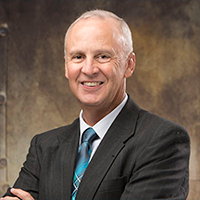 John Valasek
Aerospace Engineering, Texas A&M University; Site Director, FAA Center for General Aviation Research (PEGASAS)
John Valasek
Aerospace Engineering, Texas A&M University; Site Director, FAA Center for General Aviation Research (PEGASAS)
-
-
FlightLab: The Future of Mobility Transport: Blended Wing Body Aircraft
Description
The revolutionary Blended Wing Body (BWB) aircraft design, which promises to provide over 30% more aerodynamic efficiency than today’s tube-and-wing designs, is at an inflection point in its history. NASA, Defense Innovation Unit, and the Department of the Air Force are teaming up with industry to accelerate its development and flight-test a full-scale demonstration aircraft by 2027.
Moderator
-
 Roberto Guerrero
Deputy Assistant Secretary of the Air Force for Operational Energy
Roberto Guerrero
Deputy Assistant Secretary of the Air Force for Operational Energy
Panelists
-
 Fayette Collier
Associate Director for Flight Strategy, Integrated Aviation Systems Program
Fayette Collier
Associate Director for Flight Strategy, Integrated Aviation Systems Program -
 Daniel Pike
U.S. Air Force Operational Energy, Chief of Future Technologies & Acquisition Manager
Daniel Pike
U.S. Air Force Operational Energy, Chief of Future Technologies & Acquisition Manager -
 Lee Robinson
Head of Partnerships
Lee Robinson
Head of Partnerships
-
-
IPLC: Enabling Electric V/STOL Technologies
Description
VSTOL-02/ EATS-05 -
Live Technical Sessions
-
Forum 360: Advanced Air Mobility Cadence of Operations
Description
The Advanced Air Mobility (AAM) industry is rapidly evolving with new vehicles and technologies that are changing the way we think about transportation. As AAM evolves, a cadence of operations for economic success is becoming increasingly important.Moderator
-
 Shivanjli Sharma
Air Traffic Management eXploration (ATM-X) Deputy Project Manager
Shivanjli Sharma
Air Traffic Management eXploration (ATM-X) Deputy Project Manager
Panelists
-
 Scot Campbell
Project Executive
Scot Campbell
Project Executive -
 Skye Carapetyan
Aircraft Sales & Business Development - Infrastructure
Skye Carapetyan
Aircraft Sales & Business Development - Infrastructure -
 Khin Paing
Vice President of Program Management
Khin Paing
Vice President of Program Management -
 Jimmy Smith
National Air Traffic Controllers Association
Jimmy Smith
National Air Traffic Controllers Association -
 Craig Teasdale
Vice President, Operations
Craig Teasdale
Vice President, Operations -
 Kristin White
Chief Operating Officer
Kristin White
Chief Operating Officer
-
-
Flow Visualization Showcase
Description
The Annual Flow Visualization Showcase provides an opportunity to display computational and/or experimental fluid-dynamics visualizations that support a technical concept and enhance the understanding of the flow. Come to see this year's submissions and hear from the creators of the visualizations. Awards for the Most Artistic Flow Visualization, Most Pedagogical Flow Visualization (the visualization that best facilitates new understanding of the flow phenomena), and Most Comprehensive Flow Visualization will be presented at the end of the showcase.Session Hosts
-
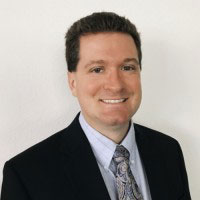 Brian A. Freno
Principal Member of the Technical Staff
Brian A. Freno
Principal Member of the Technical Staff -
 Nathan Shumway
US Air Force Academy, HQ USAFA/DFAN
Nathan Shumway
US Air Force Academy, HQ USAFA/DFAN
-
-
Machine Learning at the Edge: UAV Automatic Takeoff and Landing
Description
Artificial intelligence (AI) and machine learning (ML) are an increasing area of emphasis for the Department of Defense (DoD). In its 2022 budget the Pentagon requested $4.3 billion for AI/ML-related efforts, an over 50% jump in a two-year span. Unfortunately, much of the driving technology is being developed for commercial applications due to the relatively small size and challenges associated with the defense market. Common commercial assumptions like ample compute power, internet connectivity, and stable power are not valid in DoD applications due to deployment in what is referred to as the edge on low size, weight, and power (SWaP) platforms. Edge AI/ML refers to processing data and running algorithms on the deployed device rather than centrally. This concept allows AI/ML to run without connectivity, an important feature for military platforms that can experience degraded communication. In addition, DoD edge computing often happens in low SWaP environments due to mission and cost requirements. This can be challenging for commercially developed technology that often is designed to live in large data centers with access to ample compute resources. As a result, to make AI/ML technology deployable and tactically relevant, edge computing and low SWaP deployment problems need to be addressed. This presentation describes the process of deploying AI/ML models in low SWaP environments at the edge. Specifically, the talk looks at developing a vision-based automatic takeoff and landing deep learning system for a UAV. The presentation details the model development and optimization process for low SWaP deployment. In addition, it covers testing of the model using different deployment optimization strategies and the trade-offs associated with each. Ultimately, the presentation provides the community with an example of how to address a pressing problem associated with deploying AI/ML for military applications.Sponsored by:

Speakers
-
 Anastacia MacAllister
Technical Director, Autonomy & Artificial Intelligence
Anastacia MacAllister
Technical Director, Autonomy & Artificial Intelligence
-
-
EATS Presentation
Speakers
-
 Marty Bradley
Sustainable Aviation Consultant and Educator
Marty Bradley
Sustainable Aviation Consultant and Educator -
 Herb Schlickenmaier
President
Herb Schlickenmaier
President
-
-
FlightLab: Infrastructural Requirements for Airport Hydrogen Hubs
Description
Airports are natural nodes for hydrogen hubs. They host multiple end users, with short and long term energy supply requirements.
Moderator
-
 Jeff Bechdel
FTI Consulting and Hydrogen Forward
Jeff Bechdel
FTI Consulting and Hydrogen Forward
Panelists
-
 Nick Connell
Interim Executive Director
Nick Connell
Interim Executive Director -
 Amanda Simpson
Vice President, Research and Technology
Amanda Simpson
Vice President, Research and Technology -
 Keith Wipke
NREL’s Laboratory Program Manager, Fuel Cell and Hydrogen Technologies Program
Keith Wipke
NREL’s Laboratory Program Manager, Fuel Cell and Hydrogen Technologies Program
-
-
International Powered Lift Conference Session
Speakers
-
 Geoffrey J. Jeram
U.S. Army Combat Capabilities Development Command Aviation & Missile Center
Geoffrey J. Jeram
U.S. Army Combat Capabilities Development Command Aviation & Missile Center
-
-
Leveraging Common Components in Finite Element Assembly Models
Description
Aircraft manufacturers have long learned to take advantage of common components within design variants. For example, a typical airplane would have several design variants sharing the same wing, empennage and cockpit while having different lengths of fuselage. Significant cost savings can be achieved by reusing common components in aircraft and spacecraft assemblies. The finite element analysis world, however, has not been able to fully leverage common components in assembly models. Components are typically organized as “include files” in an assembly model. But due to the strict requirement of unique FE entity IDs, these common component models cannot be easily reused. In order to be reused, a component model typically needs to be renumbered, repositioned, or reoriented. This process is not only time-consuming, but also prone to error. In addition, a component model may appear in many design variants with thousands of load cases. It is not a trivial task to envelope and max/min search the loads associated with a component. Careful and tedious bookkeeping is required to keep track of which design variant and what loading event generated the critical component design loads. This presentation will introduce an efficient assembly modelling method – the MSC Nastran Modules. This method eliminates the need for unique FE entity ID numbering, automates component connections, allows easy instancing (translate, mirror, and rotate) of components and generates modular results to streamline the enveloping and max/min search of loads. Real-world examples of a UVA drone, offshore wind turbine platform, and a truck frame assembly will be used to demonstrate the workflow and benefits of Modules.Sponsored by:

Speakers
-
 Hanson Chang
Senior Lead Application Engineer, Manufacturing Intelligence Division
Hanson Chang
Senior Lead Application Engineer, Manufacturing Intelligence Division
-
-
Lunch on Own
-
NASA Sustainable Flight National Partnership Project Managers Panel
Description
The NASA Sustainable Flight National Partnership (SFNP) mission is to accelerate toward net-zero carbon emissions for our next-generation subsonic transports by 2050. Project managers supporting the SFNP mission will introduce their projects and provide insight as to how they became a NASA project manager, including sharing some of their technical and leadership challenges and opportunities.Moderator
-
 Martiqua L. Post
SFNP Technical and Partnership Advisor
Martiqua L. Post
SFNP Technical and Partnership Advisor
Panelists
-
 Gaudy Bezos-O’Connor
Project Manager, Electrified Powertrain Flight Demonstration, Integrated Aviation Systems Program
Gaudy Bezos-O’Connor
Project Manager, Electrified Powertrain Flight Demonstration, Integrated Aviation Systems Program -
 Brent Cobleigh
Project Manager, Sustainable Flight Demonstrator Project
Brent Cobleigh
Project Manager, Sustainable Flight Demonstrator Project -
 Shivanjli Sharma
Air Traffic Management eXploration (ATM-X) Deputy Project Manager
Shivanjli Sharma
Air Traffic Management eXploration (ATM-X) Deputy Project Manager -
 Dale Van Zante
Project Manager, Advanced Air Transport Technology
Dale Van Zante
Project Manager, Advanced Air Transport Technology
-
-
Rising Leaders in Aerospace: Planning for the Long Term: Setting Yourself Up for a Long-term Career
Description
For those of us early in our career in the Aerospace industry it is hard to see how the choices that we're making could influence our careers in the long-term. This discussion will focus on helping us better understand how we can be setting ourselves up for a successful career in Aerospace, and how we can navigate the opportunities and challenges along the way. Boxed lunches available for the first 120 attendees on a first-come-first-served basis. Line up early so you can get a lunch! - IPLC: Distributed Propulsion Architectures
-
Live Technical Sessions
-
Reaching new Heights in Aerospace with Cloud-Based Engineering and CAE Simulations
Description
Experts from Rescale invite you to join us to uncover the transformative power of cloud-based engineering in Aerospace! Learn how industry leaders like Boom Supersonic and Vertical Aerospace are optimizing design and performance through multi-disciplinary optimization and surrogate models. Discover the cutting-edge cloud hardware technology teams are using to analyze applications like wing structural strength, turbine flow, antenna placement, and lightning strikes, and more. And, see how to run simulations faster in the cloud using Helios, Star-CCM+, and OpenFOAM to drive new breakthroughs.Sponsored by:

Speakers
-
FlightLab: Preventing Aviation Accidents with Safety Technology
Description
This is a historic time for aviation safety in the United States, with many safety-enhancing technologies, including auto-land, auto-taxi, and auto-takeoff, as well as high-precision GPS and remote piloting capabilities within reach. While major U.S. commercial air carriers have a strong safety record, more must be done to make aviation safer. Recent studies have concluded that general aviation operations, which include all civil flights other than scheduled air services and non-scheduled air transport operations for hire, are between 8 and 15 times more dangerous than driving, but that 68% of fatal accidents could potentially have been prevented with safety-enhancing technology. During this session, attendees will learn about:- Recent data and studies that analyze general aviation accidents and identify how safety technology could have prevented the incidents.
- Specific safety technologies that are under development to prevent these accidents and how these technologies also apply to advanced air mobility.
- The regulatory and public policy focus and changes that are necessary to deploy aviation safety technologies.
Moderator
-
 John Koelling
Chief Operations Officer
John Koelling
Chief Operations Officer
Panelists
-
 Juerg Frefel
Co-founder and CTO
Juerg Frefel
Co-founder and CTO -
 Loyd Hook
Professor of Electrical and Computer Engineering
Loyd Hook
Professor of Electrical and Computer Engineering -
 Paul Johnston
Chief Engineer
Paul Johnston
Chief Engineer
-
Forum 360: Airspace Management of Evolving AAM
Description
Air traffic management (ATM) proposals for advanced air mobility (AAM) recognize the need for strategic and tactical airspace deconfliction, where the need for coordination appears in different forms and nuances. From using predefined corridors to the evolving to 4D trajectory-based operations, limitations applying ATM principles to very dense and potentially more complex operations must be considered. Also, watch the 10 May 2023 AIAA AAM Task Force meeting with the Association for Uncrewed Vehicle Systems International (AUVSI), hosted by the Vertical Flight Society. Watch VideoModerator
-
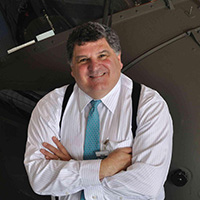 Nick Lappos
Senior Technical Fellow, Advanced Technology
Nick Lappos
Senior Technical Fellow, Advanced Technology
Panelists
-
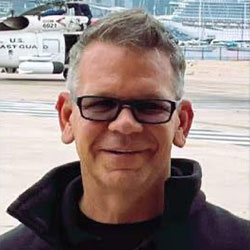 Chris Baur
President & CEO
Chris Baur
President & CEO -
 Lisa Peterson
Vice President, Business Development
Lisa Peterson
Vice President, Business Development -
 Dan Sloat
Founder & President
Dan Sloat
Founder & President -
 Jeanne Yu
Senior Technologist, Sky for All Chief Strategist
Jeanne Yu
Senior Technologist, Sky for All Chief Strategist -
 Warren Zelaya
Engineering Manager
Warren Zelaya
Engineering Manager
-
-
Live Technical Sessions
-
FlightLab: AIAA Presents Issues in Aerospace: CVD Reimagined
Description
AIAA chose to sunset the Congressional Visits Day annual event for many reasons. Primarily, CVD was too broad to make discrete aerospace policy impacts. It was a great experience for our members but didn’t move the needle on issues important to our organization. Our new reimagined CVD aligns with our 3 domains of Aerospace R&D; Aeronautics; and Space. Together with the domain leadership, the PPC can help AIAA advocate for targeted and discrete issues in each of these domains in a specific period of time called Domain Campaigns. Additionally, AIAA will expand our annual Aerospace 101 into an Expo featuring key issues from all domains along with bedrock issues important to our members. AIAA Presents is a years-long event providing timely advice and advocacy to our stakeholders and our members alike.Panelists
-
 Ming Chang
AIAA Domain Lead for Aeronautics; Senior Director of Flight Technologies
Ming Chang
AIAA Domain Lead for Aeronautics; Senior Director of Flight Technologies -
 Chris Crumby
SpaceROC
Chris Crumby
SpaceROC -
 Daniel L. Dumbacher
CEO
Daniel L. Dumbacher
CEO
-
-
Consensus and Collaboration: Empowering Volunteer Leaders
Description
Discover examples and scenarios that can boost your impact on the aerospace community.Speakers
-
 Peter Montgomery
Chair, AIAA Talent and Leadership Development Committee; Director of Commercialization, Test & Operations Support Contract, Kennedy Space Center, Jacobs
Peter Montgomery
Chair, AIAA Talent and Leadership Development Committee; Director of Commercialization, Test & Operations Support Contract, Kennedy Space Center, Jacobs
-
-
Networking Break
-
Virtual Technical Sessions
-
Forum 360: Distributed Electric Propulsion – Lessons Learned from the X-57
Description
As the long anticipated first manned flight of the X-57 Maxwell Project approaches, we reflect on the design approaches and highlight the challenges and lessons learned from developing and implementing distributed electric propulsion.
Moderator
-
 Vince Schultz
Deputy Project Manager for the Maxwell X-57 Flight Project
Vince Schultz
Deputy Project Manager for the Maxwell X-57 Flight Project
Panelists
-
 Dave Avanesian
Systems Engineer
Dave Avanesian
Systems Engineer -
 Nick Borer
Advanced Concepts Group Lead, Aeronautics Systems Analysis
Nick Borer
Advanced Concepts Group Lead, Aeronautics Systems Analysis -
 Sean Clarke
Senior Research Systems Development Engineer
Sean Clarke
Senior Research Systems Development Engineer -
 Andrew Gibson
President, CEO & Co-Founder
Andrew Gibson
President, CEO & Co-Founder -
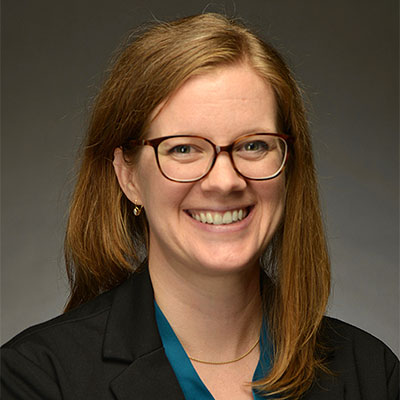 Laura Kushner
Lead Systems Engineer
Laura Kushner
Lead Systems Engineer
-
-
FlightLab: Stepping Stones Towards Increasingly Autonomous Flight
Description
A panel of experts across industry, academia, and regulatory domains to present and discuss the most practical near-term (3-5 year) approaches to achieving increasingly autonomous flights. The focus areas will include machine intelligence, operational paradigms, technology barriers, and regulatory approaches.Moderator
-
 Michael Logan
NASA Langley
Michael Logan
NASA Langley
Panelists
-
 Mike Feary
NASA
Mike Feary
NASA -
 Keith Hoffler
President, Senior Research & Development Engineer, Adaptive Aerospace Group; Advisory Board Member, FAA Center for General Aviation Research (PEGASAS)
Keith Hoffler
President, Senior Research & Development Engineer, Adaptive Aerospace Group; Advisory Board Member, FAA Center for General Aviation Research (PEGASAS) -
 Earl Lawrence
Xwing
Earl Lawrence
Xwing -
 Ruth Stilwell
Aerospace Policy Solutions LLC
Ruth Stilwell
Aerospace Policy Solutions LLC
-
-
Paper Airplane Contest
Description
Test your design and flight operations skills against the brightest minds in aviation. Fold and fly your own paper airplane versus experts and enthusiasts. Fly for fun! Earn bragging rights! Compete for prizes!
-
How Whisper Aero Propels the Future of Aviation
Description
Whisper Aero is pioneering a more compelling and connected future with cleaner, quieter, and more efficient thrust. Throughout history, propulsion innovation has been the catalyst for remarkable transformations in flight and transportation. Whisper’s propulsive technology opens doors for communities to connect across the Advanced Air Mobility frontiers, whether propulsion for drones, regional/urban air mobility, or the forthcoming ability to achieve electric 100 passenger aircraft. In this talk, Whisper Aero co-founder and CEO and industry veteran Mark Moore will provide an overview of the company's history, mission, technology, and path forward.Keynote
-
 Mark Moore
CEO
Mark Moore
CEO
-
-
Exhibit Hall
-
Networking Break in Exposition Hall
-
Sustainability Leadership: Addressing Industry Developments in Aviation
Description
Leaders from Airbus, Boeing, and GE Aviation continue their discussion begun at the 2022 AIAA AVIATION Forum around driving change in the aviation industry around sustainability.Speakers
-
 Jerrold Cline
Senior Research Scientist
Jerrold Cline
Senior Research Scientist -
 Ellen Ebner
Director, Sustainable Technologies, Sustainability & Future Mobility
Ellen Ebner
Director, Sustainable Technologies, Sustainability & Future Mobility -
 Amanda Simpson
Vice President, Research and Technology
Amanda Simpson
Vice President, Research and Technology
-
-
Live Technical Sessions
-
Forum 360: Current and Future State of Aircraft Certification
Description
The current aircraft certification standards and processes are adequate for certifying our current understanding of aircraft – airplanes are airplanes, helicopters are helicopters and so on. Future aircraft will blur the lines – airplanes the take off like helicopters, helicopters will cruise like airplanes, uncrewed systems, automated/autonomous systems will test the limits of the current understanding of certification standards and processes.Moderator
-
 Paul Brinkmann
Aerospace America Staff Reporter
Paul Brinkmann
Aerospace America Staff Reporter
Panelists
-
 David Alexander
Senior Director, Standards
David Alexander
Senior Director, Standards -
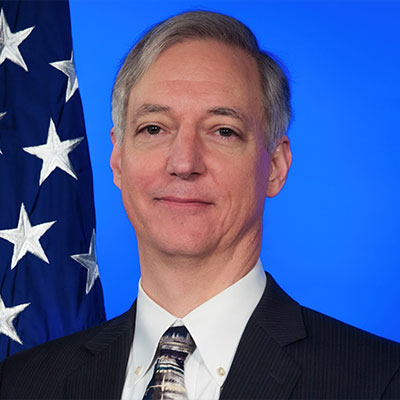 Bruce DeCleene
Director, Office of Senior Technical Experts
Bruce DeCleene
Director, Office of Senior Technical Experts -
 John Deruchie
Chief - Regional Engineering
John Deruchie
Chief - Regional Engineering -
 Carie Mullins
Director, Analytics
Carie Mullins
Director, Analytics -
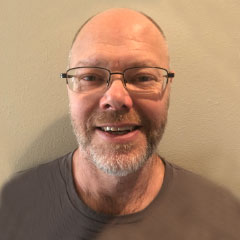 Anthony Mumford
Principal Flight Sciences Engineer
Anthony Mumford
Principal Flight Sciences Engineer -
 Jia Xu
CTO and Sr. Director Engineering, UAM and UAS
Jia Xu
CTO and Sr. Director Engineering, UAM and UAS
-
-
IPLC: V/STOL Design and Aerodynamics
Description
VSTOL-04/TF-13 -
Obstacle Detection as the Enabling Technology for Urban Air Mobility
Description
Flight safety has always been an issue in aviation, and will be one of the most sensitive aspects in urban air mobility. Safety will be one of the first hurdles to be overcome to get the new mobility off the ground, because flight safety — especially in UAM — means passenger safety and safety for those living in the cities that will be crossed by eVTOLs.Speakers
-
 Fabio Masci
Founder and CEO
Fabio Masci
Founder and CEO
-
-
GA-ASI Automatic Takeoff and Landing Systems: Past, Present, and Future
Description
For over 20 years, General Atomics-Aeronautical Systems Inc. (GA-ASI) has been developing and refining the Automatic Takeoff and Landing Capability (ATLC) used across its fleet of UAVs. Originally demonstrated in 2002, ATLC has since been integrated into nearly all the 27+ aircraft variants that GA-ASI produces. Today, this system is used in broad applications to reduce pilot workload, improve safety of operations, enable operations in inclement weather, and more. This presentation will review the history of ATLC, introduce the fundamental design components of the system, and share a few highlights of what’s in store for ATLC in the future.Sponsored by:

Speakers
-
 Alexander Valencourt
Flight Controls Engineering Supervisor
Alexander Valencourt
Flight Controls Engineering Supervisor
-
-
Lunch with Exhibitors
-
Transforming Logistics with Elroy Air’s Chaparral UAS
Description
Learn about the future of aerial logistics with Elroy Air as they work to bring same-day shipping to every person on the planet. Their revolutionary Chaparral hybrid-electric VTOL UAS combines air and ground autonomy, enabling automated terminal navigation and cargo loading for rapid turnaround times with minimal human touch. With a cargo capacity of 300–500 lbs and mission range up to 300 miles, Elroy Air’s system will revolutionize commercial middle-mile logistics, humanitarian shipping, and military resupply. Join Elroy Air’s CEO Dave Merrill to hear about the transformative potential of the Chaparral UAS and explore the impacts of next-generation automated logistics.Sponsored by:

Speakers
-
 David Merrill
CEO and Co-Founder
David Merrill
CEO and Co-Founder
-
-
Live Technical Sessions
-
IPLC: V/STOL Control Authority and Safety
Description
VSTOL-05/TF-15 -
Forum 360: Advanced Air Mobility Autonomy Certification
Description
All advanced air mobility (AAM) transformational missions need certifiable automation to lower operating costs to reduce pilot training or remove the pilot from the aircraft. Some of the industry is proposing a crawl, walk, run with regulatory agencies from slowly removing pilot functions that are verifiable in software before they remove the pilot from the cockpit. This panel will discuss challenges to prove software can make multiple decisions in a contingency better than a pilot.Moderator
-
 Starr Ginn
AAM Lead Strategist
Starr Ginn
AAM Lead Strategist
Panelists
-
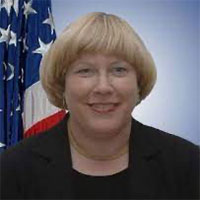 Kathy Abbott
Chief Scientific and Technical Advisor, Flight Deck Human Factors
Kathy Abbott
Chief Scientific and Technical Advisor, Flight Deck Human Factors -
 Igor Cherepinsky
Director, Sikorsky Innovations
Igor Cherepinsky
Director, Sikorsky Innovations -
 Juerg Frefel
Co-founder and CTO
Juerg Frefel
Co-founder and CTO -
 Maxime Gariel
Chief Technology Officer
Maxime Gariel
Chief Technology Officer -
 Loyd Hook
Professor of Electrical and Computer Engineering
Loyd Hook
Professor of Electrical and Computer Engineering -
 Jonathan Lovegren
Head of Autonomy
Jonathan Lovegren
Head of Autonomy
-
-
Networking Break
-
Forum 360: Flight Testing in the Age of Electric Propulsion: Lessons from the Flight Test Pioneers
Description
A panel of pioneering professional flight test pilots and flight test engineers shares their lessons learned from testing novel and innovative electrically-propelled aircraft. As professional flight testers, they bring their flight test experiences from conventionally-powered aircraft to the new world of electric aviation and share their hard-learned lessons with the community. Understanding how to plan for electric energy storage systems compared with fuel systems, electric powerplants compared to reciprocating or turbine engines, and displaying and interpreting the state of the electric powerplant compared to traditional ones are but a few of the topics that the panel may discuss. A question-and-answer session will allow the community to learn from these flight test pioneers.Moderator
-
 Herb Schlickenmaier
President
Herb Schlickenmaier
President
Panelists
-
 Pat Anderson
CTO
Pat Anderson
CTO -
 Erika Holtz
Engineering and Quality Manager
Erika Holtz
Engineering and Quality Manager -
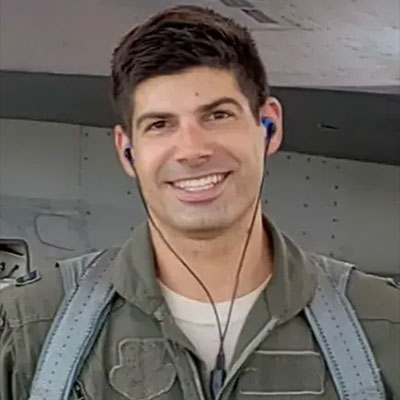 Alex Kroll
Chief Test Pilot
Alex Kroll
Chief Test Pilot -
 Sara Roggia
Head of Protections and Controls
Sara Roggia
Head of Protections and Controls -
 Peter Schmidt
COO & Co-Founder, Transcend Air Corporation, & Chair, EFT Committee, E-VTOL Flight Test Council
Peter Schmidt
COO & Co-Founder, Transcend Air Corporation, & Chair, EFT Committee, E-VTOL Flight Test Council -
 Jen Uchida
Manager Flight Test Engineering
Jen Uchida
Manager Flight Test Engineering
-
-
Virtual Technical Sessions
-
Live Technical Sessions
-
Opening Keynote: To a Faster Future
Description
Lt. Col. Joshua Burger, Air Vehicle Program Manager for the Next Air Force One and former Vector Initiative Director, will reflect on military and commercial aviation requirements, opportunities, synergy, partnerships, and accelerants. Aviation is the number one U.S. export and provides the U.S. military with a decisive advantage in any conflict. Our nation’s leadership in this sector will continue to be underwritten by the synergy between commercial and military endeavors. Our path “To A Faster Future” will require trust, partnership, and a unified vision.
Keynote
-
 Lt Col Joshua Burger
VC-25B Air Vehicle Program Manager
Lt Col Joshua Burger
VC-25B Air Vehicle Program Manager
-
-
Networking Break
-
Forum 360: Toward the Next-Gen Military Aviation Fleet
Description
Military aviation is a critical component of modern military operations, providing strategic and tactical advantages for defense and security. With the rapid advancements in technology and the increasing complexity of military operations, the need for a next-generation military aviation fleet is becoming increasingly important.Moderator
-
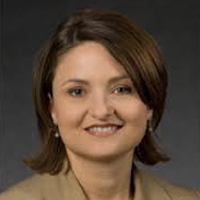 Laurette Lahey
Senior Director of Flight and Vehicle Technology
Laurette Lahey
Senior Director of Flight and Vehicle Technology
Panelists
-
 Greg Addington
Chief Strategist, Air Vehicles Division
Greg Addington
Chief Strategist, Air Vehicles Division -
 Mahendra Bhagwat
Senior Research Scientist, Airvehicle Aerodynamics and Preliminary Design, Technology Development Directorate
Mahendra Bhagwat
Senior Research Scientist, Airvehicle Aerodynamics and Preliminary Design, Technology Development Directorate -
 Larry Branthoover
PEO(T) APEO Science and Technology
Larry Branthoover
PEO(T) APEO Science and Technology -
 CAPT Loren Jacobi
CNAF N8 / Force Requirements Officer
CAPT Loren Jacobi
CNAF N8 / Force Requirements Officer -
 Joseph Kendall
Deputy to the Air Combat Command Chief Scientist
Joseph Kendall
Deputy to the Air Combat Command Chief Scientist -
 Venke Sankaran
Chief Scientist of Aerospace Systems Directorate
Venke Sankaran
Chief Scientist of Aerospace Systems Directorate
-
-
Live Technical Sessions
-
Lunch on Own
-
Live Technical Sessions
-
EATS: Rolling Recap II
Description
- Introduction
- Overview - Rolling Recap Concept
- Electrified Aircraft Rolling Recap Quick Highlights AIAA Aviation 2023
- Electrified Aircraft Rolling Recap Quick Highlights AIAA-IEEE EATS 2023
- Preview AIAA SciTech 2024.
Moderator
-
 Herb Schlickenmaier
President
Herb Schlickenmaier
President
Panelists
-
 James L. Felder
Aerospace Engineer
James L. Felder
Aerospace Engineer
-
Forum 360: Hypersonics
Description
Hypersonics are currently in the realm of the defense industry and space applications. When we look at supersonic travel, we are at the precipice of commercial supersonic travel if the airframe and engine technologies become available on the market. However, commercial hypersonics face additional challenges and a longer time frame. To short-circuit this, the industry is looking at near-term military applications to help develop solutions that ultimately will address the challenges of hypersonic flight for both civil and military applications. The goal is to unlock the technology needed to develop a vehicle system that is efficient, eco-friendly, and easily integrated into the global air and launch traffic of the future. This panel will discuss the challenges of hypersonic flight, the technology available today for military applications, the technology needed to be developed for tomorrow’s military applications and efficient, sustainable hypersonic commercial flight, and the policies and regulations needed to be addressed for the integration of hypersonic travel within the global air and launch traffic.
Moderator
-
 Natalya Bailey
CTO and Co-Founder
Natalya Bailey
CTO and Co-Founder
Panelists
-
 David Arenson
Vice President and Chief Engineer
David Arenson
Vice President and Chief Engineer -
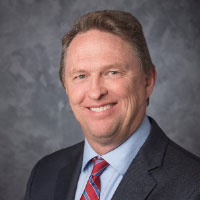 Kevin Bowcutt
Senior Technical Fellow and Chief Scientist of Hypersonics
Kevin Bowcutt
Senior Technical Fellow and Chief Scientist of Hypersonics -
 Michael Brown
Chief, Hypersonic Sciences Branch
Michael Brown
Chief, Hypersonic Sciences Branch -
 Pete Francis
Chief Engineer for Advanced Hypersonic Weapons
Pete Francis
Chief Engineer for Advanced Hypersonic Weapons
-
-
Forum 360: Supersonics
Description
High-speed commercial travel has been in the making for the better part of 50 years, starting with the fielding of the Concord SST. In the 1970s, supersonic flight was only allowed over water (over the Atlantic or the Pacific) due to the unpleasant effects of the sonic boom. In addition, propulsion technology was not at a performance and efficiency level that was profitable for the operator or quite enough for airport communities during landing and takeoff. The current second wave of supersonic commercial ventures is banking on numerous innovations, including advancements in materials, aerodynamics, and, in some cases, low boom technology to enable overland flights and enable economic operations. The development of an efficient propulsion system remains both a challenge and a unique opportunity. Along with the innovations required, the policies and regulations of integrating high-speed flight into the commercial air traffic need to be revisited due to today's globally crowded airspace. This panel will discuss the nuances of integrating supersonic flight into commercial traffic as well as the technical challenges of developing efficient and sustainable aircraft and engines that are cost effective for the operator.
Moderator
-
 Robert A. “Robbie” Cowart
Founder and CEO
Robert A. “Robbie” Cowart
Founder and CEO
Panelists
-
 Peter Coen
Mission Integration Manager, Quesst
Peter Coen
Mission Integration Manager, Quesst -
 John Morgenstern
Head of Aerodynamics & Boom
John Morgenstern
Head of Aerodynamics & Boom -
 Ryan Snell
Director, Overture Airframe
Ryan Snell
Director, Overture Airframe -
 Tom Viars
Director of New Products & Technologies
Tom Viars
Director of New Products & Technologies
-
-
Networking Break
-
Live Technical Sessions









